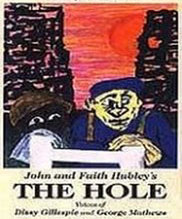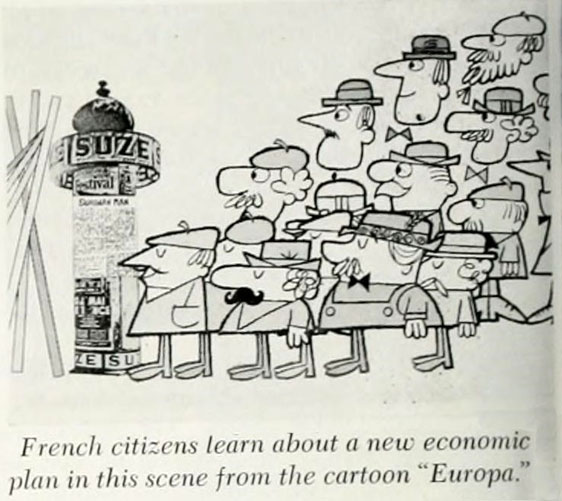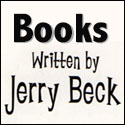 It was obvious to the Academy Shorts Branch which films were superior artistically at this point; Which “cartoons” should earn an Academy Award; Which films display craft, thought or an ‘intelligent’ laugh. And it’s slowly becoming obvious to the Hollywood studios themselves. Long just a local industry party, the Academy Awards had to “grow” during this new decade – or risk becoming irrelevant. This year another John Hubley film – one with a strong sense of humanity, and a biting comment on contemporary issues – took home the gold statue. It faced off against a witty comedy from Gene Deitch, the artiest Looney Tune ever from Chuck Jones, a Ludwig Von Drake lecture from Disney, and an adaptation of a Ray Bradbury story told via oil paintings, by the former UPA crew. Overall a fine selection of nominees.
It was obvious to the Academy Shorts Branch which films were superior artistically at this point; Which “cartoons” should earn an Academy Award; Which films display craft, thought or an ‘intelligent’ laugh. And it’s slowly becoming obvious to the Hollywood studios themselves. Long just a local industry party, the Academy Awards had to “grow” during this new decade – or risk becoming irrelevant. This year another John Hubley film – one with a strong sense of humanity, and a biting comment on contemporary issues – took home the gold statue. It faced off against a witty comedy from Gene Deitch, the artiest Looney Tune ever from Chuck Jones, a Ludwig Von Drake lecture from Disney, and an adaptation of a Ray Bradbury story told via oil paintings, by the former UPA crew. Overall a fine selection of nominees.
This week: 1962
The actual nominees were:
ICARUS MONTGOLFIER WRIGHT (Format Films) Osmond Evans [View]
NOW HEAR THIS (Warner Bros.) Chuck Jones [View]
SELF DEFENSE FOR COWARDS (Rembrandt Films) Gene Deitch [View]
SYMPOSIUM ON POPULAR SONGS (Disney) Bill Justice [View]
And the Oscar went to:
THE HOLE (Storyboard) John Hubley, director. [View]
You can watch John and Faith Hubley accept their award from Van Heflin, here:
And so we continue our research into what other cartoons were submitted to the Academy for Oscar consideration but failed to make the cut. Qualified, screened, but NOT nominated were:
 HOME LIFE (Terrytoon) Connie Rasinski
HOME LIFE (Terrytoon) Connie Rasinski
BANTY RAIDS (Warner Bros.) Robert McKimson
EUROPA (Pelican Films) Ted Lowry
BARBARA (Interlude Films) Max Hutto
THE OLD MAN AND THE FLOWER (Pintoff Pictures) Ernest Pintoff
PETROUSHKA (Fine Arts Films) John Wilson
THE ASTRONAUTS (Argos Films) Walerian Borowczyk & Chris Marker
EVERYDAY CHRONICLE (Zagreb) Vatroslav Mimica
Here’s the documentation:

With these posts we ask that you put yourself in their place – which films would you have nominated? Which cartoon should have won? For your edification and viewing pleasure, here are the cartoons that didn’t make the cut. Enjoy the show!
HOME LIFE (Terrytoon) Connie Rasinski
Bill Weiss must have assumed because Sidney was nominated once that he should keep sending these cartoons in to the Academy – regardless of quality. This print is particularly bad – and edited (its only 2 and a 1/2 minutes) – but you get the entire plot. Sidney (now voiced by Dayton Allen) is counting coconuts and dreams of getting a job as a circus elephant. He soon applies for a job which requires him to use his memory – to count coconuts! Sidney screams, “Put on the end titles!” – a line oft repeated, I’m sure, at Academy screenings when Terrytoons were submitted.
BANTY RAIDS (Warner Bros.) Robert McKimson
This one is considered a Warner Bros. cartoon cult-favorite mainly because of the addition of a horny beatnik rooster to the typical doings in the barnyard of Foghorn Leghorn. Topical references to beat culture, rock and roll – even eccentric ventriloquist Senor Wences – with Foggy representing the ‘establishment’ (he refers to rock and roll as ‘terrifying sounds’, while Banty believes Foggy is “the fuzz”). At one point, the Leghorn becomes confused over Banty’s sexuality, and hooks him up to some barnyard conversion therapy. Of course its Foggy who ends up cross-dressing by the iris-out (with a reference to Some Like It Hot as the final line). “Sick man – real sick!”
EUROPA (Pelican Films) Ted Lowry
This short is presently missing-in-action. Europa was a sponsored film (by the European Community Information Service) created to explain to American audiences the history of Europe’s economics and its common market. It tells the legend of Princess Europa, carried away by Zeus, and her sons who have battled for centuries – with many factions trying to unite the brothers. Boxoffice Magazine had a small blurb about the film in its December 17th 1962 issue:
“Europa”, a new color cartoon that encapsulates 2,500 years of history in ten minutes, is playing with top-grossing features in its first key city engagements, Robert Finehout, Association Films theatrical vice-president reports. The short is available to theaters free through Association Films booking service, Theatrical Film Distributors, headed by Harry Willard. The film was produced by Pelican Films for the European Community Information Service.”
You can read more about the film in this article from Business Screen magazine (July 1962).


BARBARA (Interlude Films) Max Hutto
Another short which is missing-in-action. An off-beat story of a little girl who refuses to “conform”, Barbara was written and produced by Bill Jennings (aka William Dale Jennings, author of the western classic, The Cowboys), Produced by Ralph Hulett (background painter for Walt Disney Productions), directed by Max Hutto (director of radio classics, including Fibber McGee and Molly) and narrated by Hans Conreid.
According to a Warner Bros. press release about Bill Jennings:
In 1960 Dale went to work for Hollywood Animators, working in the production of animated films. There he re-met Max Hutto, a former radio director whom Dale had known while with Ice Capades. Dale showed Max a script for a little film held written called Barbara. Max read it overnight and said Lets shoot it, and they did. They used an animation camera at night and shot it with cartoon drawings that Dale did himself. It took several weeks and $2,000 and it won lst Prize in the Palo Alto Film Festival. That was the beginning of a long friendship and profitable partnership for Dale and Max and Ralph Hulett, the famous California watercolorist. They left Hollywood Animators to start Interlude Films, which Dale describes as a company that made little films to be used in the interlude between features and coming attractions. Interlude also made TV commercials, documentaries, educational films and industrial films.
A synopsis for the film says that: “Barbara is a young girl who makes the painful discovery that she is just like everyone else. Her one dominant desire is to “be somebody”, but she really doesn’t know how this can be done”. She tries to be “a leader”, but becomes dissatisfied with that and then tries to separate herself from the crowd – but soon ‘the crowd’ attempts to be more like her. Sage advice from her uncle – that she is already “somebody” – satisfies Barbara to ‘be herself’.
The film was seen non-theatrically – mainly used in high school classrooms – for many many years.
THE OLD MAN AND THE FLOWER (Pintoff Pictures) Ernest Pintoff
Pintoff designed, directed and composed the score for this short, conceived and designed by Len Glasser. Former Terrytoon artist Vinnie Bell animated the film and the ubiquitous Dayton Allen does the voices.
This film has its charms, but its part of a trend (led by Pintoff himself) of post-UPA cartoons (by ex-UPA animators) in-search-of an audience, outlet or purpose. Hubley and Deitch seem to have it figured out. As for Pintoff, he was a force to be reckoned with – and he’d hit pay dirt next year (tune in next week).
PETROUSHKA (Fine Arts Films) John Wilson
I’m not sure why John Wilson’s Petroushka was submitted in 1962. It was made for television and first broadcast in 1956. Academy rules were different then, and perhaps Wilson had scored a theatrical release for the film at this point. That said, Petroushka was already landmark film for its graphics and its status as an early TV special (it was a featured segment on NBC’s Sol Hurok Music Hour). However TV was primarily in black & white then – and reception was pretty awful. Seen in 35mm, on the big screen, it probably looked like this:

Wilson persuaded Igor Stravinsky to prepare a shorted score, based on his classic ballet piece, and to conduct the LA Philharmonic for the soundtrack of this 13-minute special. The story concerns the romance of a circus puppet and it is told with particular grace. Perhaps if a subject such as this were the basis for UPA’s first feature (instead of Magoo’s Arabian Nights) UPA might have changed the landscape of animated features – as they had with their shorts. Nevertheless, Petroushka was qualified for nomination in 1962, but failed to make the cut. Perhaps it was a little too late…
THE ASTRONAUTS (Argos Films) Walerian Borowczyk & Chris Marker
Another film from a few years past was submitted this year for nomination. Les Astronautes (1959) was produced by Anatole Dauman of Argos Films (Paris), distributed in the U.S. by Janus Films. It would appear an 8 minute version of the film was submitted to the Academy.
A collaboration by Polish filmmaker Walerian Borowczyk and French director Chris Marker – about an inventor exploring space and the world around him – told using various techniques including collage, pixilliation and animated still photos. Terry Gilliam was inspired by this short, and one can see its influence on Yellow Submarine.
EVERYDAY CHRONICLE (Zagreb) Vatroslav Mimica
And finally, a Zagreb cartoon which, through patterns of collage and paint, explores the theme of “alienation in an industrialized area”. A blind man with a music box loses his dog. He puts an advertisement in the paper which brings no result. Meanwhile, the dog is mistakenly put to work on an assembly line – and no one notices.
This one is not available to screen – any guidance by our readers to point us towards a copy of this film is appreciated.

Two frames from “Everyday Chronicle”
The earlier posts in this series: 1948, 1951, 1952, 1953, 1954, 1955, 1956, 1957, 1958, 1959, 1960 and 1961.
(Thanks to Libby Wertin and Don Yowp for special contributions to this post)


 Jerry Beck is a writer, animation producer, college professor and author of more than 15 books on animation history. He is a former studio exec with Nickelodeon Movies and Disney, and has written for The Hollywood Reporter and Variety. He has curated cartoons for DVD and Blu-ray compilations and has lent his expertise to dozens of bonus documentaries and audio commentaries on such. Beck is currently on the faculty of CalArts in Valencia, UCLA in Westwood and Woodbury University in Burbank – teaching animation history. More about Jerry Beck [
Jerry Beck is a writer, animation producer, college professor and author of more than 15 books on animation history. He is a former studio exec with Nickelodeon Movies and Disney, and has written for The Hollywood Reporter and Variety. He has curated cartoons for DVD and Blu-ray compilations and has lent his expertise to dozens of bonus documentaries and audio commentaries on such. Beck is currently on the faculty of CalArts in Valencia, UCLA in Westwood and Woodbury University in Burbank – teaching animation history. More about Jerry Beck [



































Being the year of the Cuban missile crisis, THE HOLE was the obvious choice. Too bad EVERYDAY CHRONICLE was not included among Rembrandt Film’s great DVDs on Zagreb.
Favorite Looney Tunes shorts of 1962:
-Wet Hare
-A Sheep in the Deep
-Quackodile Tears
-Crows’ Feat
-Bill of Hare
-Zoom at the Top
-Louvre Come Back to Me!
-Honey’s Money
Sadly, aside from a few exceptions, it was all downhill from here…
On “Barbara”, most of the people involved (including Dale Jennings), were involved with 1963’s “cult” film narrated by Edward Everett Horton “One Got Fat” – with goofy live action pre-teens, tweens and teens in chimp masks on bikes, to see if they’re able to ride to the neighborhood park in a proper and safe fasion. That one had a lot of the old Capitol/Seely stock music library cues familiar from so many of the old shows.
In addition to which, I bet that Barbara used those libraries. On the list of the films, the “documentation” that Jerry posted above, I noted Barbara is only 7 minutes, about half One Got Fat’s length (Interlude Films did both, as mentioned.)
Personally, I think Banty Raids should have gotten the nod for best animated short of 1962! It was one of the craziest Foghorn Leghorn cartoons ever with that li’l beatnik bantamweight going gaga over the hens but had to keep his cover as a baby so Foghorn wouldn’t find out who he really was.
I’ve seen The Hole on the old PBS Series International Animation Festival (which was produced by San Francisco’s KQED CH 9) with jazz legend Dizzy Gillespie and George Matthews lending their voices as the construction workers – and admittedly, it was worthy to win the 1962 Oscar for best animated short
Anyhoo… here are some animated shorts that should have been considered (in my humble opinion) for the Oscar for Best Animated Short of 1962:
Bill of Hare (Warner Brothers), Martian Through Georgia (Warner Brothers), The Jet Cage (Warner Brothers), Anatole (Paramount/Famous Studios), Honorable Family Problem (Terrytoons), Loyal Royalty (Terrytoons) , Mackerel Moocher (Universal/Walter Lantz Productions)
I found a copy of “Everyday Chronicle” here:
https://vimeo.com/39098352#t=40m54s
It’s a Croatian print from a talk with the director, and it’s shot directly from the projection screen (also a bit cropped). Sadly, I know no Croatian, but it has other films by him if anyone has the time.
Wonderful! Thank you for finding that link!
Petrouska was a striking piece of animation, with beautiful designs and better than average animation complementing Stravinsky’s score. Had it been submitted back when it was made before airing on television, it likely would have been nominated.
I bet, too bad John Wilson didn’t think to do so himself. His stuff needs to see recognition someday.
Did Stravinsky have any comments about this one? I’m guessing he was kinder than he was to “Fantasia”, seeing as how he appeared to be more actively involved.
I suppose we’ll never know what he thought. The narrative still felt pretty honest to what Stravinsky had in mind. The late Michael Sporn posted about the film and included a few articles relating to it.
http://www.michaelspornanimation.com/splog/?p=2886
What? No Loopy De Loop?
No Speedy Gonzales? MEXICAN BOARDERS is better than THE PIED PIPER OF GUADALUPE.
Will you be including Jan Lenica’s Labyrinth in your Cartoons Considered For An Acadamy Award-1963 article,Jerry?
Well, first… I don’t like to tip in advance what will be listed in each year’s category. So be patient. 😉
And second… what is included each week (each year) is not up to me. It’s up to whether or not the film was actually submitted and qualified for being screened for the nomination. I will tell you that Jan Lenica’s Labyrinth was not submitted in 1963 – and will not be featured next week.
I’m surprised Lenica’s ‘Labyrinth’ wasn’t nominated for Best Animated Short. Like ‘The Astronauts’,it obviously influenced Terry Gilliam,and the short itself shows the influence of Max Ernst and Hieronymus Bosch.
Weird mental connection: When the beatnik rooster in “Banty Raids” did his Elvis impression, I immediately had a flash of Bugs Bunny doing to same moves to the same music. I’m thinking the original “Bugs Bunny Show”.
Yep – you’re thinking of the episode where’s Bugs’ singing & Daffy’s playing keeps Yosemite Sam awake – it’s an 1st Season episode.
The song itself was an actual tune that came out around that time, made somewhat popular (or not) by Frankie Avalon.
https://youtu.be/sqvfeQIQrWI
I wonder if any of the screening sheets for years before 1951 will surface in the future.
The shorts screened for this year are a lot more interesting than those of last year. I wonder what shorts were screened for the year 1950.
I saw “The Hole” last year on the big screen, at a Hubley retrospective at a local theater, along with “Moonbird” and several others. Hub’s son (who provided one of the voices in “Moonbird” along with his brother) was at the showing answering questions.
While Most of the Gene Deitch Tom & Jerry Cartoons were not-well-received,here’s two great Gene Deitch T&J shorts that MGM should’ve submitted to the Acadamy that I find very funny and more entertaining:Tall In The Trap and Carmen Get It.